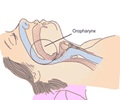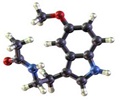A new study has found that a microRNA, which could find new ways to fight cancer and other diseases, plays an important role in regulating circadian rhythm.
Liheng Shi, a researcher in Texas AnM's Department of Veterinary Integrative Biosciences, explained that circadian rhythm is the roughly 24-hour cycle of physiological activities of humans, animals and even bacteria.Their research focussed on the circadian rhythm in chickens' eyes, which apparently have a lot in common with human eyes.
"The prefix 'photo-' in photoreceptors means light, and photoreceptors in animals' eyes receive light signals and then translate them into signals that their brain can understand, and that is how they see," he explained.
Shi notes there are two kinds of photoreceptors - cone photoreceptors and rod photoreceptors, named for the shape they resemble.
Some channels, which are called L-VGCCs, are important to the circadian rhythm in chickens' eyes because they are the pathways through which messages go in and out of photoreceptors, and these messages are crucial to the proper functioning of the eye.
A group of proteins (L-VGCCa1C) carries the messages in and out. At night, they get more work done than during the day to "prepare chickens' eyes for another day's busy work" and "tell various parts of the eye to adjust to the darkness," explained Shi.
Advertisement
"There must be an explanation and we found a possible answer," said Shi.
Advertisement
"During the day, the 'naughty small guy' crawls onto the back of his brother mRNA, so his brother cannot concentrate on his work. At night, however, he lets his brother go, so his brother focuses on his work and gets more work done," said Shi.
"Besides regulating circadian rhythm, the microRNA family also influence cancer development, cell division, heart disease, and so on," he added.
The study has been published in the "Journal of Biological Chemistry."
Source-ANI
RAS










